Louis Prima – “The Wildest” – King Of The Swingers
Posted on January 9, 2022 by Rico Ferrara – Blues For A Big Town Blog, 2022
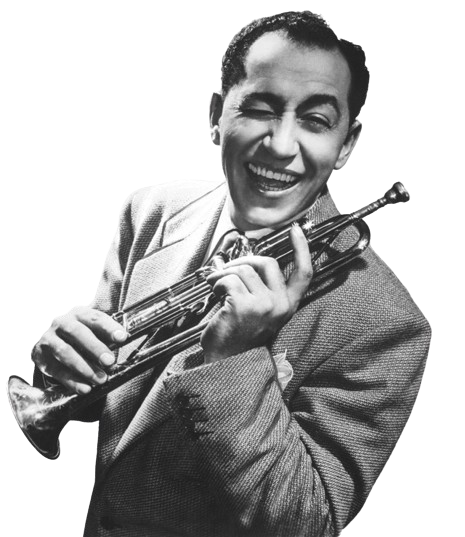
During the peak of his career in the mid 50’s Prima summed up his appeal in a Downbeat interview:
“Variety. The audience never knows what comes next. And to tell you the truth, neither do we. We always throw them surprises, and they love it”
Louis Prima
Like many families of my generation, we always gravitated towards the Ed Sullivan Show on Sunday evenings in the 50’s and 60’s.
The dour Sullivan, a New York entertainment columnist, produced and hosted the variety show, and also selected the various acts that would appear over the course of the one hour program. One of the more frequent guests were Louis Prima & Keely Smith.
Given their stage act – singer Smith standing stoically with her hands behind her back unimpressed while Prima thrashed around clowning, scatting, singing – I thought that they were one of the many comedy acts that appeared on the show from time to time. This impression was shared by the general populace that viewed Prima as an entertainer rather than a serious musician.
It wasn’t until years later that I came to realize that Prima, a Louis Armstrong devotee, was in fact, a fine trumpet player, songwriter, and band leader. Also, to Prima’s credit, he continually kept current and reinvented himself in the course of his 5 decade career.
The ballad of Louis Leo Prima, “The King Of The Swingers,” started on December 10, 1910. Born to Sicilian immigrants, Louis grew up on St. Peter Street in the Treme′ neighbourhood of New Orleans. (At the time of Louis’ birth New Orleans had the most Italian and Sicilian immigrants of any city in the U.S.). Louis can thank his mother Angelina for getting him started on the road to being a musician in that she insisted that the three Prima children take music lessons. Accordingly, he took violin lessons while his older brother Leon and sister Elizabeth took piano lessons. (Leon, a future well-known local band leader and club owner, later switched to cornet and Louis followed suit).
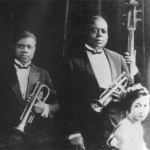
Louis, who played violin well enough to win first prize in an amateur contest, taught himself to play trumpet at 13 and started his own band – Louis Prima’s Kid Band – a year later. His musical selections were centred on New Orleans Jazz that Louis first heard and quickly captured his imagination in the many integrated Italian and African American neighbourhoods in Treme′ and the French quarter. Both in live performance and on record, Prima was especially taken by King Oliver and Louis Armstrong’s improvisational skills.
Sensing that his future was that of a working musician, Louis left high school before graduation and immediately joined the musicians union.
His initial relatively significant jobs were playing in a theatre pit band as well as a member of a number of small Jazz combos at his brother Leon’s night club.
Over the course of the next few years Prima, who was said “learned to swing before he learned how to talk”, started gaining a fair bit of notoriety around New Orleans cultivating a large, both male and female, fan base. (His legion of female fans bears mentioning because his appeal to women was not lost on Prima. He would be married five times in addition to having numerous affairs over the course of his life thus putting a strain on both his personal and professional life going forward).
Thinking that there was more to discover, in 1933-34 he moved first to Cleveland and then Chicago, where he made his recording debut on Bluebird Records, before returning to New Orleans once again. As it would happen Guy Lombardo was in New Orleans in 1934 taking in Mardi Gras festivities when he caught Prima and His New Orleans Gang at brother Leon’s Club Shim Sham on Bourbon Street. Suitably impressed, Lombardo befriended Prima and persuaded him to try his luck in New York.
Although having contacts provided by Lombardo, Prima wasn’t finding immediate success in New York.
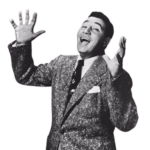
His prospects changed however when he was booked to play the newly opened Famous Door on 52nd Street. Prima and his New Orleans Gang turned what had started as a musicians club into an entertainment landmark.
His good fortune in New York would be short lived however. Amid his growing success at The Famous Door and his popular Brunswick recordings Prima unexpectedly moved with his band to L.A. in 1935. While stating that he was looking for new challenges, rumours persisted that he was being leaned on by certain members of the mob that wanted a piece of the action thus hastening his exit.
In L.A. he opened his own club for a time – The Famous Door, (that had no affiliation to the NY club).
Capitalizing on the Swing craze, and the predilection for big bands, Prima expanded his band calling it The Gleeby Rhythm Orchestra. Prima continued to perform locally, tour, and record with the hugely popular big band well into the 40’s. Prima’s blending of Jazz with his natural bent for appearing to have the time of his life while performing not only attracted a considerable fan base but also earned him great reviews. Louis Prima was riding high in Jazz popularity polls.
His band became more about fun and less about Jazz as his comedic side began to unfold and flourish.
Prima displayed a total irreverence for lyrics; treating them like a piece of music and constantly improvising. Prima pushed the limits by adding Italian to his zany onstage persona. He started employing fractured Italian phrases not only in performance and but on his recordings as well – with recordings like “Felicia No Capicia”, “Please No Squeeze Da Banana”, and “Oh, Marie”. With the anti-Italian sentiment running high during and well after WW II, he did so to the dismay of many critics who didn’t take kindly to his antics while pushing his ethnic identity. He refused to tone it down, and dismissed any backlash stating that he was a product of both his American and Italian cultures. (It didn’t help matters that Prima didn’t serve in the military due to a knee injury).
L.A. proved to be a perfect place for Louis to leverage his popularity as he started to appear in a number of films, (always in a musical role).
In fact it was in his first film – 1936’s Rhythm On The Range – with Bing Crosby that Prima debuted a song “Sing Bing Sing” that morphed into “Sing, Sing, Sing”, which became a standard as well as a major Swing hit for Benny Goodman.
Prima rode the big band wave until 1949 when he saw that the big band era was dying. Prima’s next move would simultaneously propel him to the height of his creativity and popularity. In a matter of a few months he established his definitive band line-up and found the perfect venue for both his music and stage show.
It all started when Prima was holding auditions in Norfolk Virginia for new female singer to replace his long time vocalist Lilly Ann Carol in 1948.
That’s when he came upon the 20 year old Dorothy Jacqueline Keely. The singer, soon to be known to all as Keely Smith, was a visually striking woman who possessed a large natural voice and employed smooth relaxed phrasing. And, just as importantly, she could swing with ease. His next move was the decision to return to fronting a small combo that could readily combine the Jazz of his early years with fun of his later years. To realize his vision he hired New Orleans musicians Sam Butera and The Witnesses as the backbone of his new band. Butera, who formed and led the band, brought his honking sax and knack for arranging Louis’ wild musical excursions. Prima did most of the solo work on trumpet while ably supported by Butera along with James Blount on trombone.
The venue was The Sahara Hotel lounge in Las Vegas.
Taking a resident booking at a Las Vegas club, hardly a prestigious gig at that time, was a risky proposition. The reason is that, generally speaking, any live music wasn’t the main attraction; it commanded little attention from an audience whose primary reason for being at the venue was to gamble, (and drink).
Musicians usually went to Vegas as a last resort, waving the white flag, and admitting to all concerned that they could get no other gigs. Or, alternatively, they were at the end of their careers trying to milk whatever was left of their appeal. Some musician friends advised him not to take the job, but Prima decided to follow his instincts (that would serve him well).
Every night the audience was treated to a mix of styles incorporating Prima’s New Orleans trumpet, combined with Swing standards, Prima’s hits, and Butera’s R&B flavoured playing and arrangements.
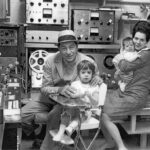
They would play 5 sets a night opening each show with “When You’re Smiling” and closing with “When The Saints Go Marching In”. In between, Keely would stand unmoved and unsmiling, gazing up at the sky while Prima with his distinctively raspy voice would take the lead on the vocals – all the while trying to entice the indifferent Smith to join in. A Variety Review noted “Prima’s uninhibited verve on stage is instantly communicated to his audience while Smith’s deadpan make-up is used as a foil for Prima as he affectionately kids her”. The routine would also include breakaway solos by both Prima and Butera as part of their trumpet / sax face-offs, and would be offset by warm ballads by Smith.
It didn’t take long for the Prima / Smith / Butera team to make the Sahara Lounge a place to see and be seen.
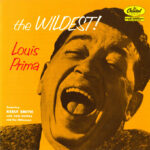
News of their uninhibited entertaining stage show quickly spread as they consistently sold out every show throughout the 50’s and into the 60’s. (As an aside, The Rat Pack: Frank Sinatra, Dean Martin, Peter Lawford, Sammy Davis Jr., and Joey Bishop were regular attendees and admirers). It was also in this time period that Prima released his most popular and best selling album, 1956’s The Wildest, that included songs that would become synonymous with Prima: “Just A Gigolo / I Ain’t Got Nobody”, “Buona Sera”, “Jump, Jive, An’ Wail”, and “Night Train”. (Prima would always contend that the recording was their best at replicating a Sahara show at 3 o’clock in the morning – when things were jumping and in full swing). Other recordings were well received as well; for example, Prima and Smith won a 1959 Grammy for their rendition of “That Old Black Magic”. All contributed to making Prima and company arguably the hottest act in show business at the time.
Just as Sam Butera is given his due as a musician, band leader, and arranger so too should Keely Smith be viewed as more than as simply Prima’s complementary sidekick.
While certainly discovered by Prima who provided her a forum to display her talents, Smith proved to be an integral part of the show; and revitalized his career. Along the way, among other acknowledgements, Smith received a Grammy for her 1958 album I Wish You Love, and a 1959 Playboy Jazz Award. And, it goes without saying that, after Smith left the collective when she divorced Prima in 1961 – Smith was Prima’s fourth wife and, as part of a recurring theme, divorced him on the grounds of his infidelity – she was sorely missed. Her replacement, Gia Miano, (Prima’s fifth and last wife), paled in comparison when it came to Smith’s vocal expertise, comedic talent, and stage presence.
(As a last point on the Prima / Smith team, their influence on American culture can be found at various moments, and none more so than the 1970’s popular Sonny & Cher show. The TV show was surely influenced by Louis and Keely in that it pitted an eager buffoon (Sonny) against “a disdaining ice queen” (Cher)).
Prima continued to play Vegas and tour the country into the 70’s.
He continually changed his band line-up and his sound to keep pace with, and incorporate, whatever was hot at the time – be it R&B or Rock & Roll. Although he would never again hit the heights of his popularity during the Prima / Smith / Butera union, he remained a big draw until the end.
Prima’s final moment in the national spotlight came in 1967 when he supplied the voice of King Louie, the orangutan in the Disney animated feature The Jungle Book. The song “I Wan’na Be Like You” was a hit and went on to be covered by the likes of Los Lobos and Big Bad Voodoo Daddy. And, it was obvious to anyone who had ever seen Louis perform that the King Louie character was directly inspired by Prima’s on stage antics.
Louis Prima underwent surgery in 1975 to remove a benign brain tumour. He survived the surgery but fell into a coma for three years and subsequently died on August 24, 1978.
Louis Prima carved out his own musical niche using that music as a means of conveying a joyful spirit. In doing so, Prima displayed a rare combination of a high-spirited musical personality and comic genius. And, make no mistake, Louis Prima began as a musician and was a musician until the end. In so doing, Louis Prima was truly one of a kind.
A Louis Prima Playlist

delightful post; fun to read and fun to listen to and watch….put a big smile on my face and got my foot tapping!
Nice article on a great musician.